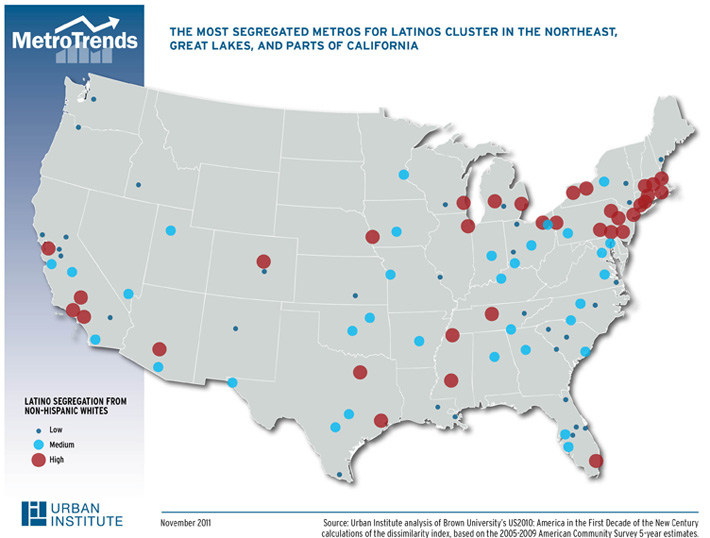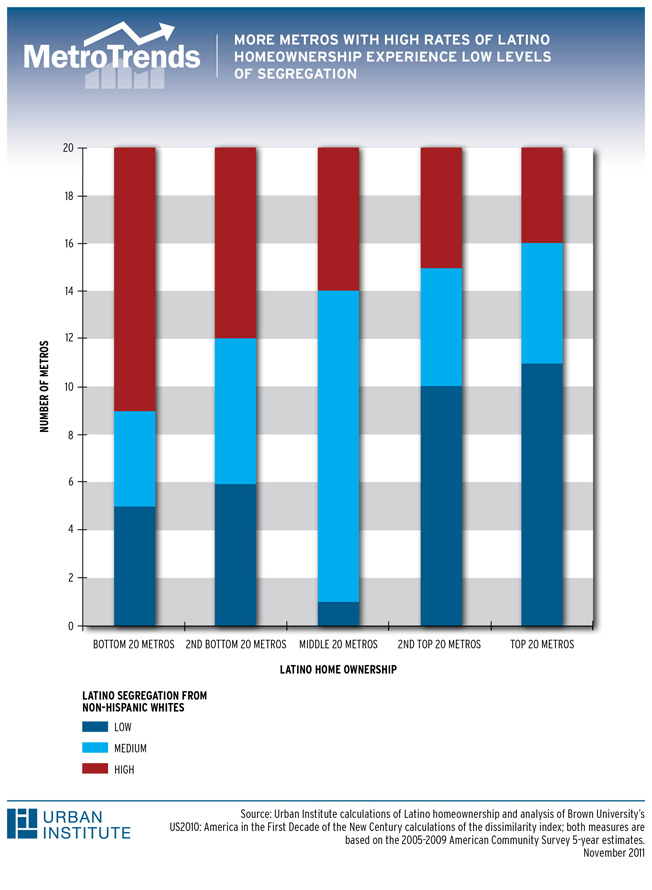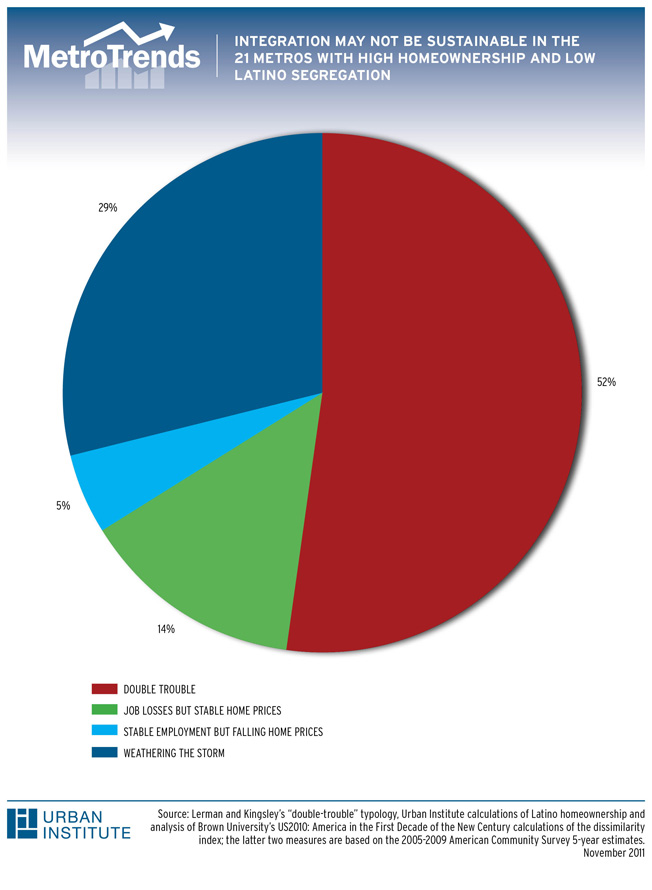
|
|
Latino Segregation Prospects for Latino Integration in the Aftermath of the Housing Crisis and Economic RecessionNumbering some 50.5 million, Latinos are one of the fastest growing groups in the country. In fact, they account for more than half (56 percent) of the population growth in the last decade. While an uptick in children of immigrants has driven much of this recent growth, Latinos are very diverse and include both new arrivals and families who trace their ties to the land back to before it became part of the United States. Like other Americans with immigrant origins, the hope is that every successive generation of Latinos experience greater opportunity, social mobility, and integration. And yet, this may not always be the case. Researchers commonly use what's called the dissimilarity index to measure the degree of segregation between two groups. For this analysis, we use a dissimilarity index calculated using pooled data from 2005-2009 to describe the distribution of Latinos relative to non-Hispanic whites. The numbers ranging from 0-100 communicate what percentage of Latinos would have to move to be equally represented in all neighborhoods within a metro area. For Latinos, the dissimilarity index ranges from a low of 27.4 in Palm Bay-Melbourne-Titusville (FL) to a high of 64.0 in Springfield (MA). In most metros, levels of residential segregation between whites and African Americans are higher, ranging from 37.7 to 81.0; but there are 9 metros where Latinos experience greater segregation than African Americans: El Paso (TX), Las Vegas-Paradise (NV), Tucson (AZ), Charleston-Summerville (SC), San Jose-Sunnyvale-Santa Clara (CA), Phoenix-Mesa-Scottsdale (AZ), Oxnard-Thousand Oaks-Ventura (CA), Allentown-Bethlehem-Easton (PA-NJ), and Providence-New Bedford-Fall River (RI-MA). Latino segregation varies substantially across metro areas, with the most segregated heavily clustered in the Northeast, the Great Lakes, and parts of California. What is it that makes one metro more segregated than another? Some might think it's the share of Latinos living in the area. But surprisingly, this factor makes little difference. For example, the Latino share in the Los Angeles metro (44 percent) is twice as large as in the New York metro (21 percent), but more than 63 percent of Latinos in both places would have to move to reach full integration. The good news is that Latinos may have achieved some level of integration through homeownership. Metros with high levels of Latino homeownership-- like Boise (ID), Toledo (OH), Riverside-San Bernardino (CA), and Jacksonville (FL)-- register particularly low levels of residential segregation. This is in many ways reassuring, since many African Americans continue to live in highly segregated neighborhoods even after buying their own homes. The problem is that this integration may not be sustainable. Unlike many European immigrants who successfully moved into integrated neighborhoods with solid FHA loans following World War II, the expansion of Latino homeownership in the last decade was largely built on the sub-prime bubble. Many of these high homeownership/low segregation metros are precisely the areas that experienced high growth during the boom years and crashed hard with the onset of the housing crisis and the economic recession. MetroTrends classifies more than half of the 21 metros with high Latino home ownership and low segregation as "double-trouble" metros, hit with steep job losses and falling home prices. And another 20 percent of these metros struggle with either one issue or the other. Considering the high rate of sub-prime lending to Latinos and their higher than average unemployment rate across the country, we may find integration through Latino homeownership fleeting. In the aftermath of the housing crisis and the recession, many pivotal questions linger. What does foreclosure mean for the multi-generational integration process for Latino families? With home prices at historic lows, how can we ensure that Latinos have the access to capital necessary to make the integration of the metros through homeownership sustainable? And what lessons can low Latino homeownership/low segregation metros like Portland (ME) and Portland (OR) teach us about how to foster integration when the great majority of Latinos are renters? The answers will likely shape the integration of our metros for decades to come. |
Experts Feedback
Send us your comments to help further the discussion. Share
Commentaries
|








 Molly M. Scott
Molly M. Scott